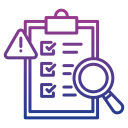
Harnessing Technology Audit Tools for Risk Mitigation
Chosen theme: Technology Audit Tools for Risk Mitigation. Welcome to a practical, inspiring deep dive into the platforms, practices, and stories that help teams transform audits into measurable risk reduction. Subscribe and share your experiences to strengthen this community’s collective insight.


Why Audit Tools Matter for Risk Mitigation
When audit tooling aggregates telemetry across systems, teams shift from reacting to incidents to predicting control drift. Predictive analytics expose emerging risks before they mature, shrinking impact windows and sharpening response playbooks. Share how your oversight evolved with better data.
Why Audit Tools Matter for Risk Mitigation
A fast-growing startup almost exposed customer reports via a misconfigured storage bucket. An automated configuration scanner flagged public read access minutes after a change, triggering a rollback and a postmortem. They then built guardrail rules that prevented recurrences entirely.
Core Categories of Technology Audit Tools
GRC platforms and risk registers
Governance, risk, and compliance platforms centralize control libraries, map requirements to systems, and maintain living risk registers. They synthesize evidence from integrations, standardize workflow, and provide executive dashboards that connect technical findings to business impact.
SIEM and log analytics for control assurance
Security information and event management tools collect logs, detect anomalies, and validate control effectiveness in real time. Properly tuned correlation rules turn noise into meaningful signals, supporting continuous auditing and enabling quick, documented incident response aligned with audit expectations.
Vulnerability and configuration management
Scanners and configuration baselines identify weaknesses, missing patches, and drift from secure standards. Effective programs pair findings with automated ticketing, ownership, and deadlines, ensuring issues are prioritized by exploitability, asset criticality, and business dependencies rather than raw counts alone.



From Tool Outputs to a Prioritized Risk Register
Move beyond base CVSS or generic severities by weighting exploitability, data sensitivity, regulatory exposure, and blast radius. Tie scores to revenue processes and critical services, so the riskiest items surface first with clear, defensible rationale for action.
From Tool Outputs to a Prioritized Risk Register
Link each finding to controls in NIST, ISO, SOC 2, or PCI to clarify why it matters and who cares. This mapping aligns remediation with audits, reduces duplicate effort, and provides traceability during board and regulator conversations.


Data Quality, Integrity, and False Positives
Consolidate similar events across tools by normalizing fields and deduplicating repeated alerts. This reduces alert fatigue, clarifies true incident frequency, and ensures reports communicate coherent stories rather than fragmented, overlapping signals that confuse stakeholders and auditors.
Data Quality, Integrity, and False Positives
Calibrate rules with historical baselines and business-aware thresholds to avoid alert storms. Strategic sampling validates that controls operate consistently across environments without overwhelming teams, keeping confidence high while focusing attention where variance genuinely indicates risk.
Define who owns control libraries, connectors, rule tuning, and evidence approval. A simple RACI clarifies accountability, reduces rework, and ensures that audit findings translate into timely, verified remediation rather than lingering as unassigned, invisible risks.
